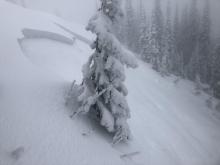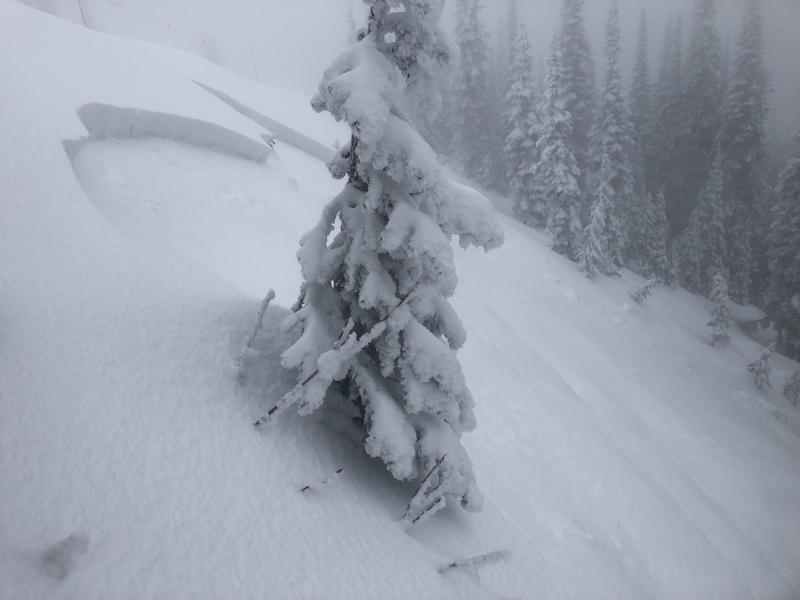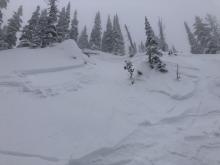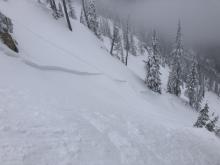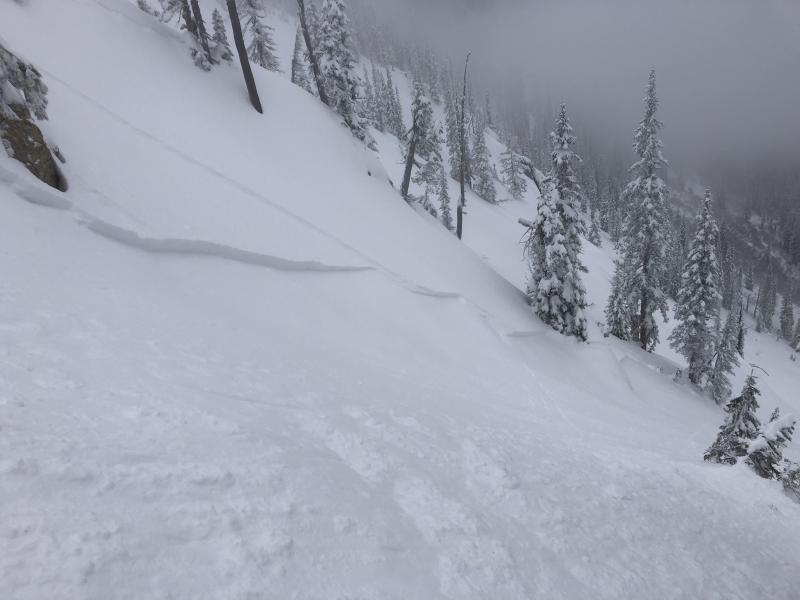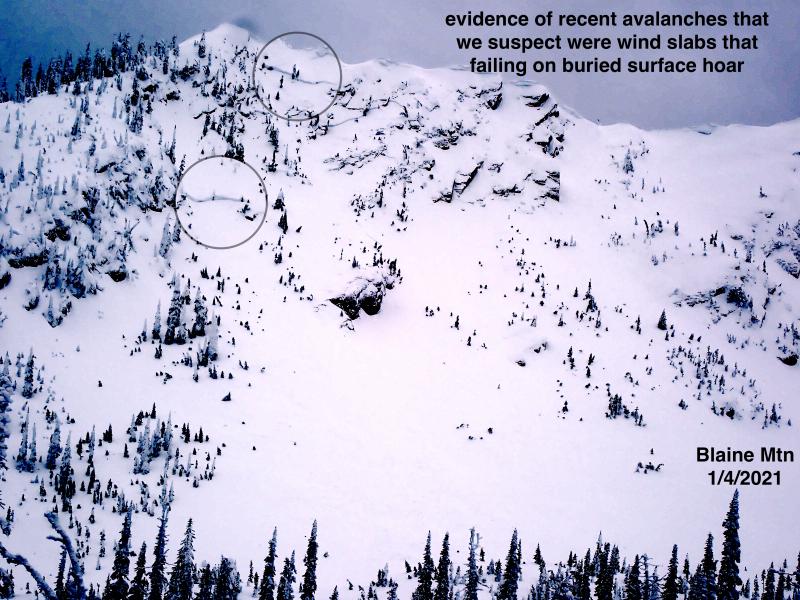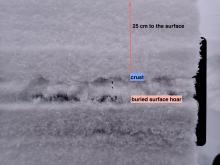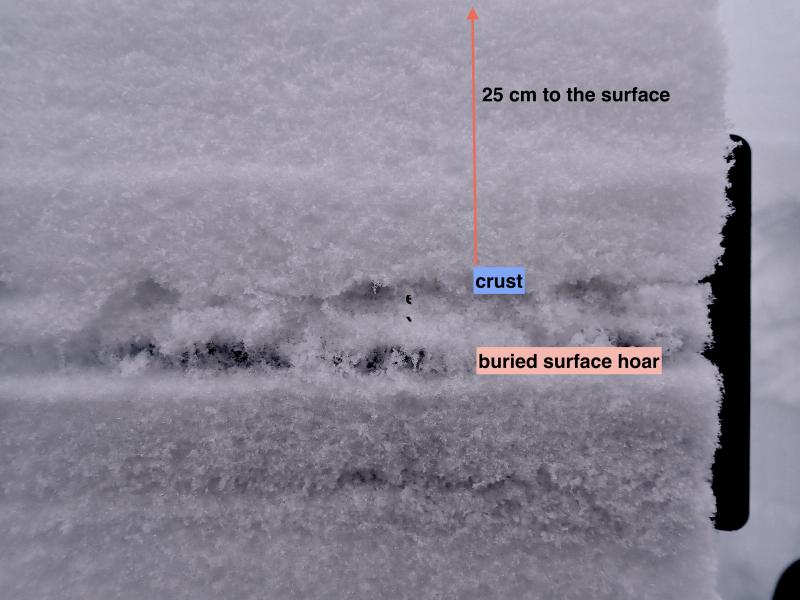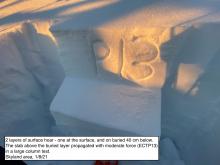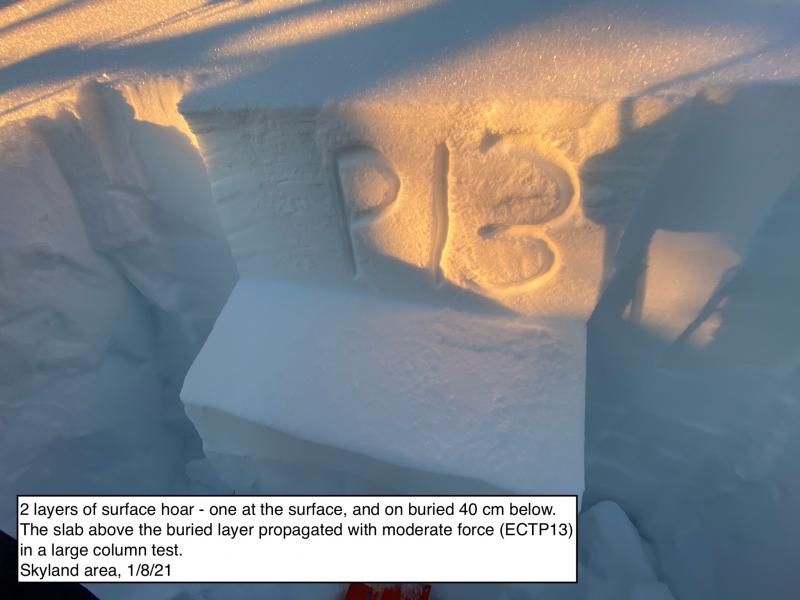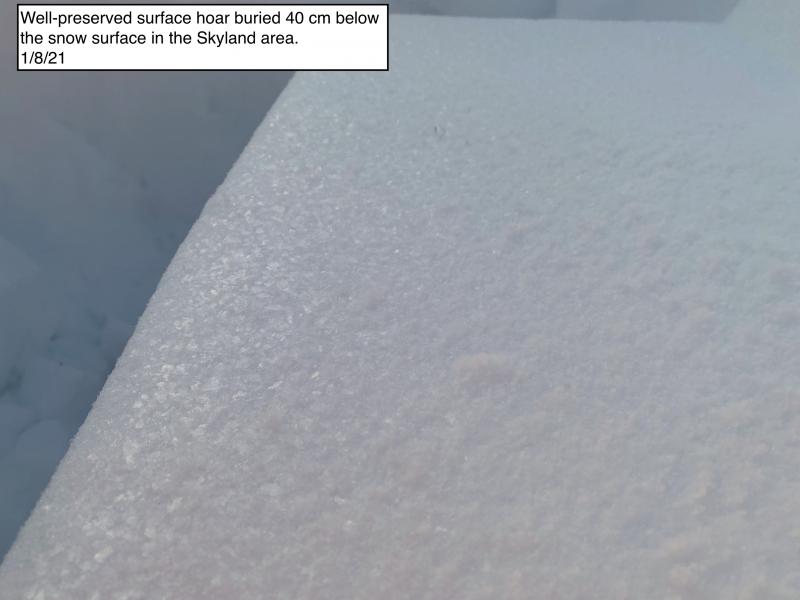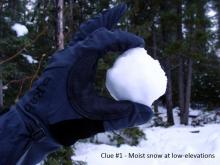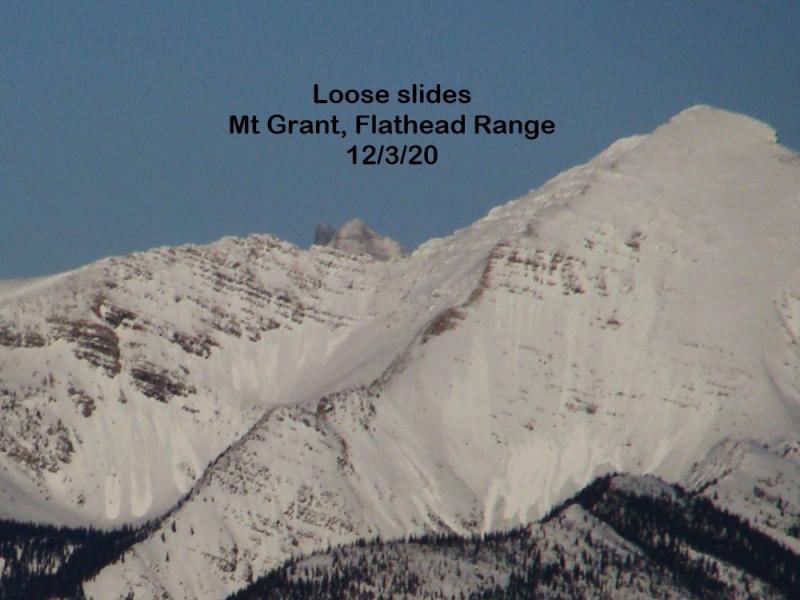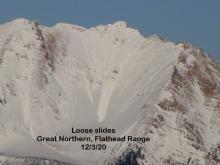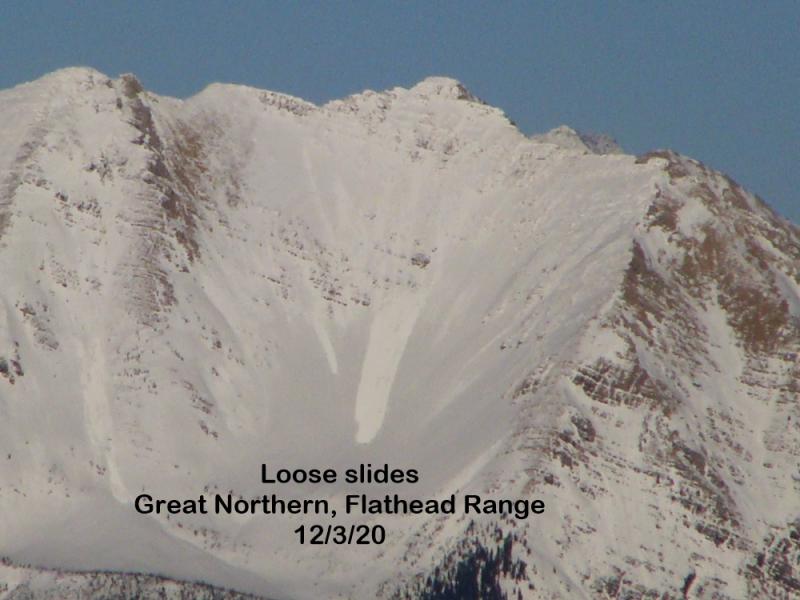| Tuesday | Tuesday Night | Wednesday | |
|---|---|---|---|
| Cloud Cover: | Mostly Cloudy | Mostly Cloudy | Mostly Cloudy |
| Temperatures: | 30 to 35 deg. F. | 21 to 27 deg. F. | 30 to 35 deg. F. |
| Wind Direction: | South | Southwest | Southwest |
| Wind Speed: | 22G39 | 26G41 | 35G56 |
| Snowfall: | 3" to 8" in. | 7" to 9" in. | 6" to 7" in. |
| Snow Line: | 5000' | 5500' | 3500' |
Whitefish Range
Swan Range
How to read the forecast
An Avalanche Watch has been issued. Expect increasing danger during the next 48 hours. Rain on snow, and new snow falling on a variety of weak surfaces can cause avalanches large enough to bury and injure you. There is an increased likelihood of triggering a larger, persistent slab avalanche. If you see 8 or more inches of new snow pile up, or rain on snow, stick to slopes less than roughly 35 degrees and stay out from underneath larger paths.

3. Considerable
?
Above 6500 ft.
3. Considerable
?
5000-6500 ft.
2. Moderate
?
3500-5000 ft.
- 1. Low
- 2. Moderate
- 3. Considerable
- 4. High
- 5. Extreme
-
Type ?
-
Aspect/Elevation ?

-
Likelihood ?CertainVery LikelyLikelyPossible
 Unlikely
Unlikely -
Size ?HistoricVery LargeLargeSmall

Today expect storm slabs to grow thicker and more dangerous as new snow piles up. Be especially cautious around leeward facing slopes where winds will drift snow into even thicker slabs. We are expecting 6 to 12 inches of new snow today with warming temperatures, creating upside-down storm snow, and rain on snow. Depending on your aspect and elevation, this new snow will fall on crusts, near-surface facets, or surface hoar and it will not bond well to those surfaces. This recipe will likely make new snow sensitive to the weight of a person. Cracking in new snow on steep test slopes is a sign to stay off more consequential terrain.
-
Type ?
-
Aspect/Elevation ?
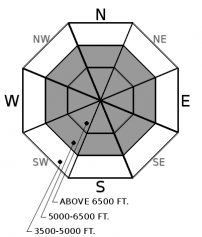
-
Likelihood ?CertainVery LikelyLikelyPossible
 Unlikely
Unlikely -
Size ?HistoricVery LargeLargeSmall

New snow and rain up to 6000 feet will increase the likelihood for very large persistent slab avalanches to fail. Several weak layers buried throughout the snowpack continue to show signs that make them untrustworthy. As new precipitation continues to stress these weak layers, there is uncertainty over what will tip the balance. Shooting cracks and collapses are sure signs to seek out terrain with slope angles no greater than 35 degrees. Be mindful of overhead hazards as the day progresses because any large avalanche triggered up high will entrain wet snow causing it to run further, and be more destructive. It is possible for an avalanche to take out the entire season's snowpack, especially below areas where recent glide cracks have opened up.
-
Type ?
-
Aspect/Elevation ?
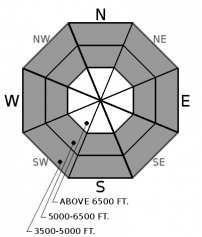
-
Likelihood ?CertainVery LikelyLikelyPossible
 Unlikely
Unlikely -
Size ?HistoricVery LargeLargeSmall

Rain on snow will weaken the snow surface causing avalanches to run long distances and be more destructive. Wet snow surfaces and water beading up on your jacket are signs to stay out from underneath large avalanche paths. Rollerballs are another precursor to wet loose avalanches and should be another cue to avoid traveling on steep slopes.
An atmospheric river makes its way into the area this morning. Today, the Swan Range will likely see the highest precipitation total of around 1 inch of snow water equivalent (SWE). Depending on elevation and freezing levels, this can produce up to 12 inches of snow. The Whitefish Range will come in a close second with around .7 inches of SWE, and the Flathead Range/Glacier National Park will come in last with around a half an inch. Winds will be cranking at optimal speeds to transport snow at middle and upper elevations. Along with new snow and wind, there is a good chance we will see rain up to 6000 feet. Models are showing increasing temperatures throughout the day, causing rain on snow and upside-down storm snow.
Thanks to a large volume of observations, we have a fairly solid grasp of what the new snow will fall on. It is safe to say that yesterday’s strong winds and freezing rain destroyed surface hoar up to roughly 6000 feet and on windward aspects. This map paints a good picture of how yesterday's wind and rain affected snow surfaces. However, in sheltered locations above roughly 6000 feet, anticipate that new snow is falling on this notorious weak layer and that it will be sensitive to the weight of a rider. In other areas, new snow will be falling on a variety of different crusts or near-surface facets. Both will act as weak layers and smooth sliding surfaces for triggered avalanches. Dial back your terrain selection today and especially into tomorrow.
New snow will fall on a variety of weak interfaces. The likelihood of triggering an avalanche will increase throughout the day. The likelihood of you, or a smaller slab avalanche, triggering a larger persistent slab avalanche will also increase throughout the day. It is safe to say that numerous weak layers exist throughout the snowpack above roughly 5500 feet in all three forecast areas. Whether it is a more recent layer of buried surface hoar or an old faceted crust from early December or Early November, one consistency they all have are that they have proven unreliable during a loading event. We are entering one of those events today. Dial back your terrain selection and watch overhead hazards. Rain on snow will cause loose wet avalanches at lower and middle elevations and any triggered avalanche will have the potential to entrain wet snow causing it to run farther and be more destructive.
A larger uncertainty is the number of glide cracks opening up throughout the Flathead Range and Glacier National Park. It is fair to consider these “weird” conditions for this time of year. During the late December natural avalanche cycle, a glide crack (shown here) opened up, and in subsequent days it failed, causing a very large avalanche (shown here). Periods of warm temperatures and rain can spur on this kind of activity. The safest bet is avoiding being below one of these large frowns and treat adjacent slopes as suspects.
Today expect a warm, wet, and windy day. Snow accumulations will vary from 3 to 12 inches with the Swan Range picking up the higher end. Winds will be moderate gusting to 40 mph out of the SW. The freezing line will hover around 6000 feet.
This forecast applies only to backcountry areas outside established ski area boundaries. The forecast describes general avalanche conditions and local variations always occur. This forecast expires at midnight on the posted day unless otherwise noted. The information in this forecast is provided by the USDA Forest Service who is solely responsible for its content.



